#record profits in egg business in 2023
Text
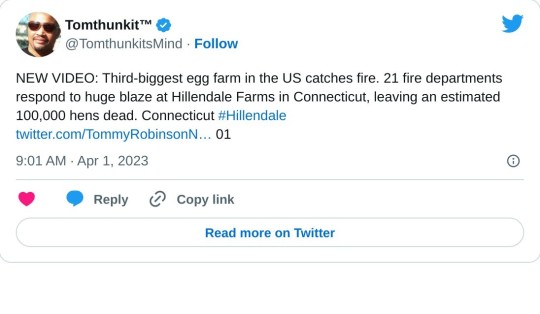
youtube
yet they say the impact from the fire was not predicted to raise prices, and we can all see that the egg industry is raking in record profits this year. some are reporting more than 750% increase in profits. This is gouging which is why I wonder why the egg industry is doing this in america.
heres something we bet you never realized ?
Since Emancipation, agriculture has moved its focus from one labor source to another in response to shifting currents of populism, nativism and racism. All three benefit from the exploitation of minority populations, and all three justify policies of exploitation in economic terms.
Arizona prisons partners with one of the countries largest egg farms?
youtube
these folks not only make egg products, but only cost the state $3.00 per hour in labor. America is the shithole of ethics
read this,
Farmers turn to prisons to fill labor needs
With immigration numbers low, the agriculture industry looks to another form of disenfranchised workers.
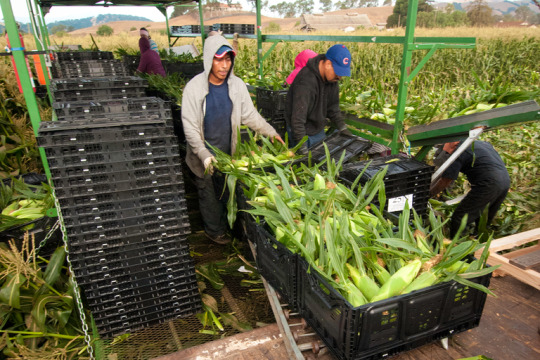
American agriculture often depends on migrant workers, like the one pictured here harvesting corn in Gilroy, California. But the anti-immigration policies of the Trump administration have farmers turning to prisoners to harvest labor-intensive crops.
Prison inmates are picking fruits and vegetables at a rate not seen since Jim Crow.
Convict leasing for agriculture – a system that allows states to sell prison labor to private farms – became infamous in the late 1800s for the brutal conditions it imposed on captive, mostly black workers.
Federal and state laws prohibited convict leasing for most of the 20th century, but the once-notorious practice is making a comeback.
Under lucrative arrangements, states are increasingly leasing prisoners to private corporations to harvest food for American consumers.
Why now?
The U.S. food system relies on cheap labor. Today, median income for farm workers is $10.66 an hour, with 33% of farm-worker households living below the poverty line.
Historically, agriculture has suppressed wages – and eschewed worker protections – by hiring from vulnerable groups, notably, undocumented migrants. By some estimates, 70% of agriculture’s 1.2 million workers are undocumented.
As current anti-immigrant policies diminish the supply of migrant workers (both documented and undocumented), farmers are not able to find the labor they need. So, in states such as Arizona, Idaho and Washington that grow labor-intensive crops like onions, apples and tomatoes, prison systems have responded by leasing convicts to growers desperate for workers.
The racist roots of convict leasing
Since Reconstruction, states have used prisoners to solve labor supply problems in industries such as road and rail construction, mining and agriculture. But convict leasing has also been a powerful weapon of white supremacy, and now, anti-immigrant sentiment.
After Emancipation, southern economies faced a crisis: how to maintain a racial caste system and a supply of surplus labor now that blacks were free.
Southern states passed vagrancy laws, Black Codes, and other legislation to selectively incarcerate freed slaves. For example, under Mississippi’s vagrancy law, all black men had to provide written proof of a job or face a $50 fine. Those who could not pay were forced to work for any white man willing to pay the fine — an amount that was deducted from the black man’s wage.
During the late 1800s, mass incarceration created an army of cheap labor that could be leased to private businesses for substantial profit. In 1886, state revenues from leasing exceeded the cost of running prisons by nearly 400%. Between 1870 and 1910, 88% of convicts leased in Georgia were black. In this Library of Congress photo from 1903, juvenile convicts are shown at work in the fields, location unknown. Library of Congress/Detroit Publishing Co.
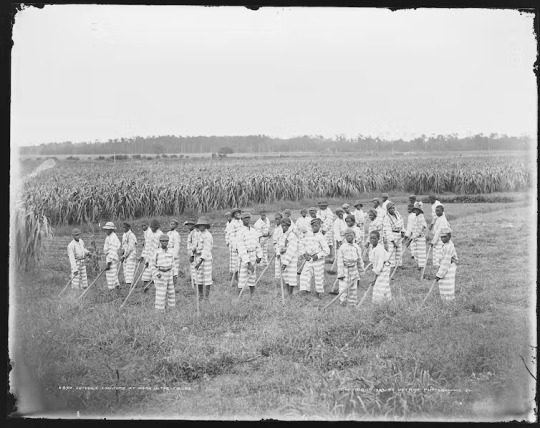
Populist response
But cheap convict labor also suppressed wages for free whites, and by 1900, poor whites began pushing back.
In 1904, James Vardaman was elected governor of Mississippi on a platform of returning whites to work and blacks to confinement. These populist white supremacist sentiments dovetailed with national economic concerns during the Great Depression, when agricultural failures led to widespread unemployment.
In the 1930s, the Ashurst-Sumners Act and accompanying state laws prohibited convict leasing and the sale of prisoner-made goods on the open market. Inmates still worked in agriculture, but the food they produced had to be consumed by other prisoners or state workers.
By the late 1970s, with growing competition from foreign manufacturing, U.S. companies sought out domestic sources of cheap labor.
Under pressure from corporate lobbies like the American Legislative Exchange Council, Congress relaxed restrictions on convict leasing with the Justice System Improvement Act. As the manufacturing and service sectors began hiring prisoners, agriculture expanded its use of migrant workers.
Profit and exploitation
Today, convict leasing offers significant revenues for prisons.
Most wages paid to inmates are garnished by prisons to cover incarceration costs and pay victim restitution programs. In some cases, prisoners see no monetary compensation whatsoever. In 2015 and 2016, the California Prison Industry Authority made over $2 million from its food and agriculture sector.
Growers can reap significant revenues, too. Inmates are excluded from federal minimum wage protections, allowing prison systems to lease convicts at a rate below the going labor rate. In Arizona, inmates leased through Arizona Correctional Industries (ACI) receive a wage of $3-$4 per hour before deductions. Meanwhile, the state’s minimum wage for most non-incarcerated farm workers is $11/hr.
Beyond the unfairness of low wages, inadequate state and federal regulations ensure that agricultural work continues to be onerous. Laborers endure long hours, repetitive motion injuries, temperature and humidity extremes and exposure to caustic and carcinogenic chemicals.
For inmates, these circumstances are unlikely to change. U.S. courts have ruled that prisoners are prohibited from organizing for higher wages and working conditions – though strikes have occurred in recent years.
Furthermore, inmates are not legally considered employees, which means they are excluded from protection under parts of the 1964 Civil Rights Act, the Equal Pay Act, the Fair Labor Standards Act, the National Labor Relations Act and the Federal Tort Claims Act.
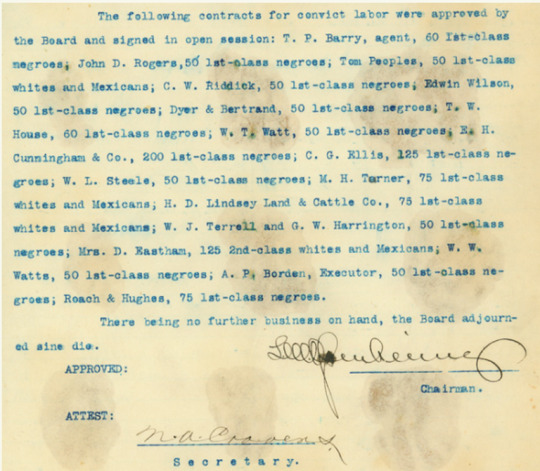
Excerpt from minutes of the regular meeting of the Texas Penitentiary Board, Nov. 12, 1903.
Whose labor is being sold?
The total number – and racial makeup – of leased inmates is difficult to calculate. Not all prison systems report on farming operations or leased labor arrangements. According to one advocacy group, at least 30,000 inmates work within the food system. But to the extent that convict leasing reflects overall inmate demographics, prison agriculture is distinctly racial.
Blacks make up 39% of inmates, but only 12% of the general population, making blacks six times more likely than whites to be incarcerated. Over the last 50 years – the same period that saw the return of convict leasing – the black incarceration rate quadrupled.
Proponents of “prison industries” argue that leasing provides rehabilitative benefits like on-the-job training for reentry. But research shows that within the prison system, whites receive better jobs than blacks, with better pay and more beneficial skills.
Whereas migrant workers often benefit home communities by returning a portion of their wages as remittances, the garnishing or nonpayment of convict wages prevents inmates from contributing to their families and home economies.
Since Emancipation, agriculture has moved its focus from one labor source to another in response to shifting currents of populism, nativism and racism. All three benefit from the exploitation of minority populations, and all three justify policies of exploitation in economic terms.
Convict leasing is the first – and now the latest – strategy.
#eggs#egg farms#chickens#prison industries#arizona#connecticut#Arizona Correctional Industries - Partnership with Hickman's Family Farms#Hillendale Farms#egg prices#egg price increases#record profits in egg business in 2023#Farmers turn to prisons to fill labor needs#Youtube
1 note
·
View note
Text
2023-11-29
Singapore
4-room Pinnacle@Duxton flat sold for S$1.41m, setting record @ S$1,409 psf
How this "stateless" man with no citizenship ended up permanently stationed here in our country selling tissue paper to make ends meet is a mystery - he's even being given "$410 a month in financial assistance"
HDB resident questions if neighbour's "cosy corner" in common area is allowed
Heavy afternoon downpour causes flash floods in Jurong West
想不到这里的报贩还有工作做! - I am shocked people here continue to buy physical copies of our $hitty newspapers
Jail for former loan shark who fled country in 2018 after jumping bail
Coroner rules that 15-year-old girl killed her 84-year-old grandfather in Bukit Batok flat before committing suicide - This case sounds very, very strange, especially considering that the girl's mother, who found the murdered man's body, washed the bloody knife that she found next to it before calling her husband & not the police!!! Shouldn't she be charged with evidence tampering?!
Maintenance worker falls into 4m-deep sprinkler pump room - he was rescued & taken to hospital
Health
Paralysed man can walk again after spinal implant
Walking faster lowers your risk of Type 2 diabetes, British research says
Singapore: Lower-income patients to get higher subsidies for surgical implants on subsidy list
25-year-old woman with ovarian cancer reveals symptoms dismissed by doctors
37-year-old Malaysian singer suddenly dies while filming - ~40 min after saying she felt unwell, she was dead; autopsy pending
Business
Simple but profitable businesses that are raking in the $$$
Unity Software to cut 265 jobs & shut Singapore office - offices in 13 other locations will be shut down too
Tiger Beer’s parent company retrenches workers in restructuring exercise
Environment
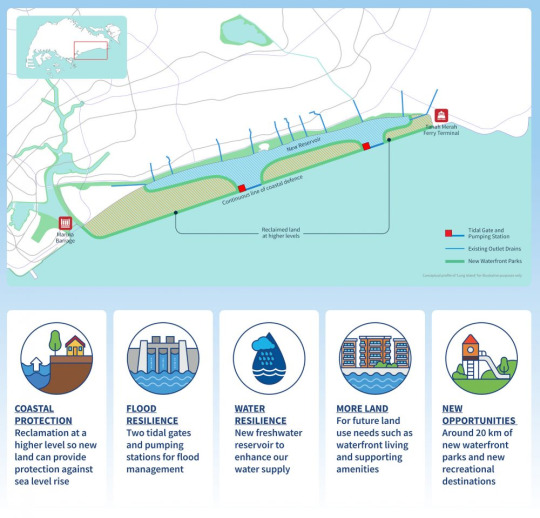
^ More about Singapore's "Long Island" project to counter rising sea levels
Nature
Spider lays eggs in man's toe while he was on cruise - this is so completely gross it's surreal
Society
26-year-old man arrested for stripping nude on Disneyland's "It's A Small World" ride - he was under the influence of drugs (as usual) 🙄
Gossip
Local celebs (including washed-up ones) take to doing sales livestreams to make $$$ - this is why education is so important: so you can avoid being a useless bum like this bunch
Travel
2-hr queue just to get into Tokyo Disneyland - I visited back in the early 1980s & don't remember there being a crowd, but then again, the world was much less populated back then, & fewer people could afford to travel because there were no budget airlines!
Changi Airport traffic crosses 90% of pre-pandemic levels for 1st time, fuelled by South Korea travel
1 note
·
View note
Text
Let’s Talk About The Rental Crisis In Australia

Renters don’t matter in Australia if the current situation is anything to go by. The available rental stock nationally has fallen to 1.1%. This is the lowest figure on record in the history of the nation. So, let’s talk about the rental crisis in Australia. Rents in the capital cities have been going up 12% year on year on average. Of course, for some their rent has gone up way beyond that in the 20% to 30% stratosphere. At the same time in Australia wages have not gone up anywhere near this. Indeed, for most wages have not risen at all. This means that poorer Australians are going backwards economically at a serious rate of knots.

Record Residential Rents Divesting Aussies Of Their Savings
What is the Albanese government doing about this key contributor to the cost of living crisis? Oh yeah, letting in a flood of new migration into the country, at the rate of 1, 000 new arrivals per day. Of course, these migrants need somewhere to live and as cashed up people they are taking the slim stocks of available rentals. Plus, they are pushing the rents up even further through market forces. Is this good governing? Do renters matter for this Labor government? It seems not and, therefore, are pushing many into the Greens corner politically.

An Economic Crisis Is Worsening In Australia
PM Anthony Albanese does not seem to register that this is a dire economic crisis for a large section of the Australian population. It is pushing many of us into poverty unnecessarily, in my view. Politicians today seem unable to do anything economically but mouth empty platitudes on TV. They have divested their responsibilities to the market and monetary policy. Like Pontius Pilate they have washed their hands of the blood of the poor. Most MPs in Australia are property owners and a goodly number of them are landlords.
You will not hear the words ‘rent freeze’ come out of their mouths anytime soon. Indeed, price controls are un-Australian, apparently, and the market must feast upon the misery of the many unimpeded.
“ “For years governments have been walking away from social housing, relying on the private sector to deliver affordable homes,” Azize said. “These numbers show that’s a dangerous approach.
“Australia’s social housing shortfall is massive. We need to create 25,000 new social homes across the country every year. We’re calling on the government to act now and end the shortfall for good.” “
(https://www.theguardian.com/australia-news/2023/sep/09/rental-vacancy-rate-plummets-to-record-low-as-australias-housing-crisis-deepens)

Two Speed Economy Killing Poorer Australians
The RBA has been pushing up interest rate steeply to combat inflation within the Australian economy. Of course, raising interest rates has a deleterious effect on rental stocks and pushes up rents. However, it is the record levels of immigration coming into this country which is really making this housing crisis worse. It is irresponsible government. It is governing with a tin ear toward the poorer demographics of our country. The poor must suffer to make the wheels of commerce turn and to make the wealthy richer. We are living in a divided land, and I don’t just mean racially speaking, it is a two speed economy. The poor are going backwards, as the cost of living crisis strips them of savings and their dignity. Meanwhile, those that the government and market deem important, go about their business raising prices and making record profits. This Labor government seems intent on shoring up Brownie points with the dominant cohort, those property owners living in the suburbs, rather than tackle the structural problems inherited from the Coalition’s decade in power. Albanese has been walking on egg shells for far too long. The poor are becoming legion and they will bite the hand that ignores them, let alone feeds them empty platitudes.
Let’s talk about the rental crisis in Australia. Stop the mass flow of migration into the country, until we have houses enough for people to live in. It is common sense, basic economics, but some voices get heard whilst the poor get bugger all.
Robert Sudha Hamilton is the author of Money Matters: Navigating Credit, Debt, and Financial Freedom.
©WordsForWeb

Read the full article
#Albanese#Australia#costoflivingcrisis#housingcrisis#Labor#moralfailure#politics#poorerAustralians#RBA#rentalcrisis
0 notes
Text
New Post has been published on All about business online
New Post has been published on http://yaroreviews.info/2023/02/the-pub-bosses-that-closed-their-kitchens-to-stay-afloat
The pub bosses that closed their kitchens to stay afloat
Ypres Castle Inn
By Josh Martin
Business reporter
In the kitchen at the Ypres Castle Inn in Rye, tables and chairs are stacked where a chef used to cook meals.
Jeff Bell is one of many landlords turning away from serving food to save money on energy, wages and ingredients.
Family favourites like fish and chips, steaks and roast dinners were once hailed as money-makers for pubs.
But industry data suggests drinks-only pubs, which are owned by a chain, had stronger sales than gastropubs for every month of 2022.
Hospitality as a whole is grappling with soaring prices and staff shortages. An average of 32 pubs closed per month last year in England and Wales, according to government figures.
A kitchen used only for preparing cheeseboards, scotch eggs and charcuterie platters means Mr Bell can keep a lid on expenses.
It looks to be paying off – profits for 2022 at his independent pub were “close to the best years we had before the pandemic”, he said. December was his best month of sales on record, he added.
The restaurants shrinking their menus to survive
Regulars Bob and Jane have just finished a platter of cold cuts and open a packet of crisps.
“They do really, really good bar snacks here, ” she said.
“There are plenty of places we can get a meal, we know we can’t here, and we accommodate that,” said Bob.
Chris Parry
Chris Parry, who runs the drinks-led pub The Three Cups in Bedford bought the lease for his site from brewery company Greene King in 2021, at the end of the Covid lockdowns.
He has to buy some keg beers and ciders, and mixers off from Greene King well as pay rent.
He said while he once needed to sell £700 of food per week to break even, that figure has ballooned to around £2,500 – so he got creative.
He allows punters to order from local restaurants and eat their meals at The Three Cups with one of his brews instead.
“Ten years ago it was food, food, food – that was how we were told to make money. Now for smaller pubs it’s just not worth it,” he said.
If no one comes we close early, says pub
Back at the Ypres Castle Inn, Mr Bell said pub managers who are tied to buying alcohol from the big pub landlord companies had often switched focus to full menus as a way of having more control over their profit margins – but now the cost of that commitment has soared.
“It was expensive then. It would be utterly unaffordable now,” he said.
Mr Parry is able to sell some of the beer from his other business, Kelchner Brewery.
Behind the bar, Zoe Capsey says the trend towards craft beer and local brands has allowed the pub to attract punters.
“Having a lot of craft beers on tap is massive now. People want pale ales and all that stuff that wasn’t that popular back then, when it would be groups of old men all drinking the same pints.”
Mixed picture
Data for the industry, compiled by CGA, showed that pub revenues were back above 2019 levels, but the gains were being eaten up by soaring inflation.
Drinks-only pubs, where food might be limited to crisps or maybe a pork pie, had sales growth that outstripped those of food-led gastropubs for every month of 2022 in the ‘managed’ sub-sector where pub companies own and run the site.
Data from the CGA for the last three months of 2022, found nearly nine in ten pub closures occurred in the independent sector.
It said this indicated that even if pub managers have control over their kitchens and can shop around to bargain on wholesale drink prices, independents like the Ypres Castle Inn may be outliers going against a worrying trend.
Higher energy costs, food prices and a difficulty finding and retaining staff contributed to the closures.
Nick MacKenzie, boss of Greene King, which owns around 2,700 pubs, restaurants and hotels said it was “inevitable” that menu prices will continue to rise this year, if food inflation continues at its current level.
He told BBC Radio 5Live’s Wake Up to Money programme he understood why some smaller operators may be switching to being drinks-led.
“Particularly when you see food price inflation being what it is now,” but his company won’t be turning away from a full menu offering.
Related Topics
Pubs
More on this story
If no one comes we close early, says pub
21 December 2022
‘It was a very difficult decision to let staff go’
16 November 2022
‘Oldest pub’ shuts as licensee faces administration
5 February 2022
Pubs warning: ‘My energy bill tripled to £35,000’
30 August 2022
0 notes